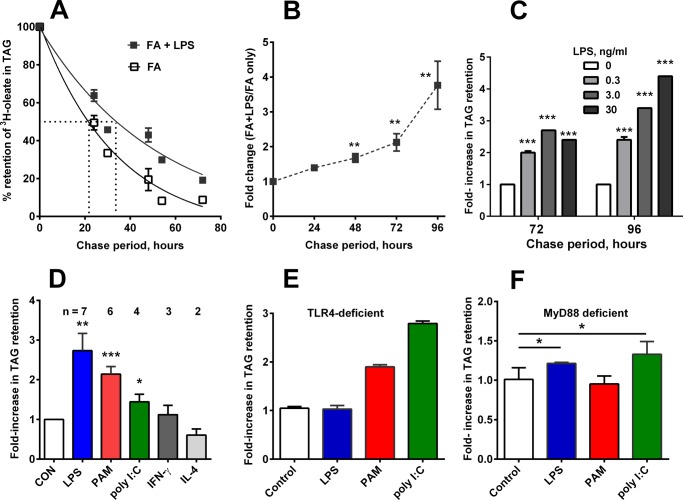FIGURE 2.
LPS, PAM, and poly(I:C) stimulate TAG retention. A, time course of TAG retention following exposure to LPS (5–10 ng/ml). Data were combined from six independent experiments, each with n = 4/group/time point. B, relative TAG retention increased in LPS-stimulated cells over time. Data are from two to six experiments per time point. C, LPS dose-response. Results are expressed relative to cells that were only loaded with FA (no LPS). n = 4/dose. D, TLR4 (LPS, 5 ng/ml), TLR1/2 (PAM, 1 μg/ml), and TLR3 (poly(I:C), 15 μg/ml) stimulated TAG retention; interferon-γ (200 units/ml) did not, and IL-4 (10 ng/ml; induces M2 phenotype) allowed TAG loss. Chase period = 72 h. The number of independent experiments is indicated above each bar. Mean + 1 S.D. E, PAM (1 μg/ml) and poly(I:C) (15 μg/ml) stimulated TAG retention in TLR4-deficient macrophages, whereas LPS (5 ng/ml) did not. 72-h chase. Two experiments, each with n = 4. Bar, mean + upper value. F, LPS and poly(I:C) stimulated TAG retention in MyD88−/− cells, whereas PAM did not. n = 3; similar results were observed in a second experiment. *, p < 0.05; **, p < 0.01; ***, p < 0.001.

